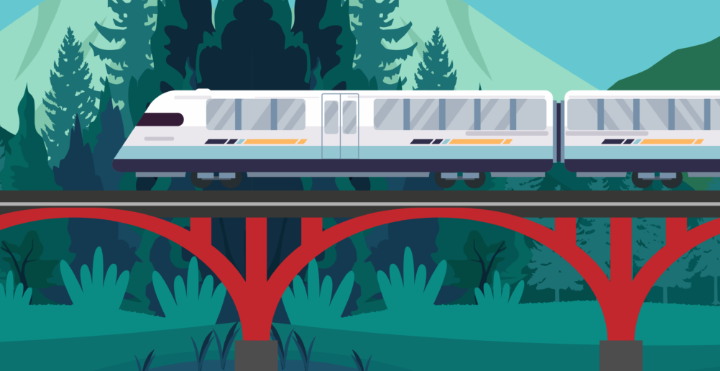Ensuring Railway Safety: Addressing Challenges and Solutions (GS Paper 3, Infrastructure)

Introduction
- The recent spate of railway accidents across various zones in India has underscored the urgent need for improved safety measures within the Indian Railways.
- Despite significant strides made over the decades—such as a dramatic decrease in annual accidents—the current situation indicates persistent vulnerabilities that must be addressed.
- This article explores the status of railway safety, identifies the underlying causes of accidents, and outlines comprehensive recommendations for enhancing safety protocols.
Current Status of Railway Accidents
- Historically, railway safety in India has improved significantly. In the 1960s, the average number of railway accidents was around 1,390 annually.
- Over the last decade, this number has decreased to approximately 80 accidents per year.
- However, this reduction does not fully reflect the safety landscape, as recent data reveals troubling trends:
Consequential Accidents
The term "consequential accidents" refers to incidents that result in injuries, fatalities, or considerable damage to railway infrastructure. The statistics for such accidents have shown fluctuations:
- 2021-2022: 34 consequential accidents
- 2022-2023: 48 consequential accidents
- 2023-2024: 40 consequential accidents
These numbers highlight that, while overall accidents have decreased, the severity and impact of certain incidents remain a critical concern.
Primary Causes of Accidents
Understanding the root causes of railway accidents is essential for developing effective safety interventions. Key contributors include:
- Human Error: A significant portion of accidents—55.8%—is attributed to failures by railway staff. This includes mistakes in operations, miscommunication, and negligence. An additional 28.4% of accidents involve non-staff factors, further complicating the safety narrative.
- Signalling Failures: Major accidents, such as the Balasore (2023) and Kavaraipettai (2024) incidents, have been traced back to failures in the signalling systems. Since 1990-1991, nearly 70% of major accidents have been classified as derailments due to signalling errors, indicating a pressing need for upgrades.
- Inadequate Safety Technologies: The 'Kavach' system, designed to prevent collisions through automated braking and alerts, has seen limited implementation. As of February 2024, it was installed on just 1,465 route kilometers—approximately 2% of the total railway network.
- Network Congestion: High levels of congestion, with nearly 30% of the network operating at over 100% capacity, exacerbate safety risks. Overcrowded tracks increase the likelihood of accidents due to insufficient space for trains to maneuver safely.
- Insufficient Track Maintenance: Diminished capital outlay for track renewal and maintenance poses a serious threat to safety. In the 2023-2024 budget, funding for track renewal dropped to 7.2%, and the appropriations for the Depreciation Reserve Fund fell drastically from 2014 to 2019.
- Operational Financial Strain: The high operating ratio (OR)—estimated at Rs 98.2 for 2024-2025—indicates that Indian Railways is spending nearly all its revenue on operational costs. This leaves little for capital expenditure, further hampering safety upgrades.
Recommendations for Enhancing Railway Safety
Insights from Committees
Numerous committees have provided recommendations to improve railway safety:
- Kakodkar Committee (2012): Suggested establishing a statutory Railway Safety Authority to oversee safety measures and create a non-lapsable Rashtriya Rail Sanraksha Kosh (RRSK) of Rs. 1 lakh crores over five years specifically for safety projects.
- Vinod Rai Committee (2015): Recommended the formation of an independent Railway Safety Authority with statutory powers, as well as a Railway Accident Investigation Board to ensure impartial inquiries into accidents.
Steps Taken So Far
To enhance safety, the Indian Railways has initiated several measures:
- Kavach Anti-Collision System: Though it has potential, the limited deployment of this system means its effectiveness is currently restricted. Expanding its reach is essential.
- Elimination of Unmanned Level Crossings: This proactive measure has significantly reduced the risk of accidents at crossings that lack proper safety measures.
- GPS-based Fog Safety Devices: These devices enhance safety during adverse weather conditions, allowing trains to operate more safely in low visibility.
Recommendations for Preventing Future Accidents
To ensure a safer railway system, several steps must be prioritized:
- Fill Loco Pilot Vacancies: With approximately 18,799 loco pilot vacancies, immediate recruitment is essential. Addressing these shortages can help alleviate pilot fatigue and reduce errors stemming from overwork.
- Expand the Kavach System: The Railways must expedite the installation of the Kavach system across more routes, particularly in high-traffic and high-risk areas, to enhance collision prevention.
- Address Network Congestion: Completing and prioritizing the development of Dedicated Freight Corridors (DFCs) will help distribute traffic more evenly, reducing congestion-related safety risks.
- Establish an Independent Railway Safety Authority: Creating an autonomous body to oversee safety protocols, as recommended by the Kakodkar Committee, will allow for a more specialized and focused approach to railway safety.
- Regulate Work Hours: Enforcing strict work hour limits for crew members and ensuring adequate rest can mitigate fatigue-related errors. Monitoring compliance is crucial to maintaining safe operational standards.
- Enhance Signal Infrastructure: Investing in modern signalling and communication technologies will significantly reduce the incidence of accidents caused by signalling failures.
- Install Track Fencing: Erecting fences along railway tracks in high-risk areas can prevent accidents involving livestock, which have been known to cause derailments.
- Increase Passenger Revenue: Judicious adjustments to passenger fares or enhancing the efficiency of passenger services can help offset financial losses, enabling more investment in safety initiatives.
Conclusion
- The journey toward ensuring railway safety in India is multifaceted and requires urgent attention.
- While significant progress has been made, the recent rise in accidents reveals that vulnerabilities remain.
- By implementing strategic recommendations, investing in technology, and addressing systemic issues, Indian Railways can work towards a safer environment for passengers and staff alike.
- A commitment to continuous improvement and a proactive approach to safety can ensure that the railway network remains a reliable and secure mode of transportation for all.


